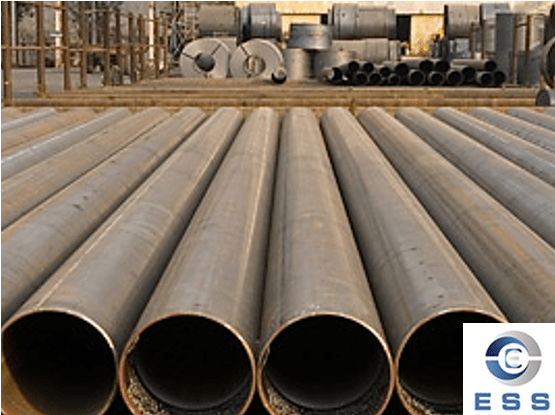1.Common heat exchange tube specifications and standards at home and abroad
Depending on different domestic and foreign standards, the specifications of heat exchange tubes are also different. The following is an introduction to common heat exchange tube specifications and standards:
(1)International standards
The International Organization for Standardization (ISO) stipulates that the length of heat exchange tubes shall not exceed 18000mm, the outer diameter shall be 6mm to 89mm, and the wall thickness shall be 1.0mm to 8.1mm. Common international standards include ASTM A179, ASTM A192, ASTM A210, ASTM A213, etc.
International standards refer to the specifications and standards of heat exchanger tubes applicable worldwide. Common international standards include:
|
Standard
|
Name
|
Pipe diameter range (mm)
|
Wall thickness range (mm)
|
|
ASTM A179/A179M
|
Carbon steel seamless cold drawn tube
|
6-76
|
1-8
|
|
ASTM A213/A213M
|
Stainless steel and heat resistant alloy seamless tube
|
3.2-127
|
0.4-12.7
|
|
DIN 17175/2448
|
Carbon steel and alloy steel seamless tube
|
10-762
|
1-80
|
|
JIS G3461
|
Carbon steel boiler and heat exchanger tube
|
15.9-139.8
|
2-20
|
(2)American Standards
The outer diameter of heat exchange tubes specified by American standards is generally 5/8 inches, 3/4 inches or 1 inch, the length is up to 30 feet, and the wall thickness is 0.049 inches to 0.120 inches. The American Standards Association (ASA) standards mainly include A69.1, A450, A250, A213, etc.
(3)European Standards
European standards mainly use millimeter specifications, and commonly used tube diameters are 6mm, 8mm, 10mm, 12mm, 14mm, 16mm, 18mm, 20mm, 22mm, 25mm, 28mm, 30mm, etc. The standards for specifications are EN10216-2, EN10217-2, DIN17175, etc.
(4)Chinese Standards
Chinese standards refer to the specifications of heat exchanger tubes applicable to the domestic scope. Common Chinese standards are:
|
Standard
|
Name
|
Pipe diameter range (mm)
|
Wall thickness range (mm)
|
|
GB/T 24593
|
Welded steel pipe
|
10-127
|
1-10
|
|
GB/T 5310
|
Boiler tube
|
12-426
|
2-50
|
|
GB/T 8163
|
Carbon steel seamless pipe
|
6-426
|
1-40
|
|
GB/T 9948
|
Stainless steel seamless pipe
|
6-830
|
0.5-55
|
(5)Enterprise standards
Enterprise standards refer to the specifications of heat exchanger tubes applicable to certain specific enterprises. Common enterprise standards include:
|
Standard
|
Name
|
Pipe diameter range (mm)
|
Wall thickness range (mm)
|
|
BAOSTEEL TP347HFG
|
Seamless alloy steel pipe for boilers and heat exchangers
|
25-426
|
2.5-50
|
|
Zhejiang Jianli TP304H
|
Seamless stainless steel pipe for boilers
|
19-51
|
2.5-5
|
(6)Industry standards
Industry standards refer to the specifications of heat exchanger tubes used in a specific industry. Common industry standards include:
|
Standard
|
Name
|
Pipe diameter range (mm)
|
Wall thickness range (mm)
|
|
SH3405
|
High temperature alloy steel pipe
|
10-219
|
1-40
|
|
SY/T 0587
|
Seamless pipe for petroleum cracking
|
60-630
|
4-60
|
2.Different specifications according to different application scenarios
The specifications of heat exchange tubes also vary according to different application scenarios. For example, in the field of steam heat exchange, the tube length is generally 6m or 10m, and the tube diameter is 25mm, 38mm, etc.; in the chemical industry, the tube diameter is generally 19mm, 25mm, 32mm, 38mm, 50mm, 65mm, etc.; in the papermaking field, the tube diameter is generally 19mm, 25mm, 38mm, 50mm, etc. Therefore, when choosing heat exchange tubes, it is necessary to select appropriate specifications according to specific application scenarios.
3.Summary
According to different standards and application scenarios, the specifications of heat exchange tubes will vary and need to be selected according to specific circumstances. In addition, attention should be paid to the material selection, tube spacing, tube length and other issues of the part in direct contact with the tube to ensure the normal operation and heat exchange effect of the heat exchanger.













 Eastern Steel Manufacturing Co.,Ltd not only improve product production and sales services, but also provide additional value-added services. As long as you need, we can complete your specific needs together.
Eastern Steel Manufacturing Co.,Ltd not only improve product production and sales services, but also provide additional value-added services. As long as you need, we can complete your specific needs together.









